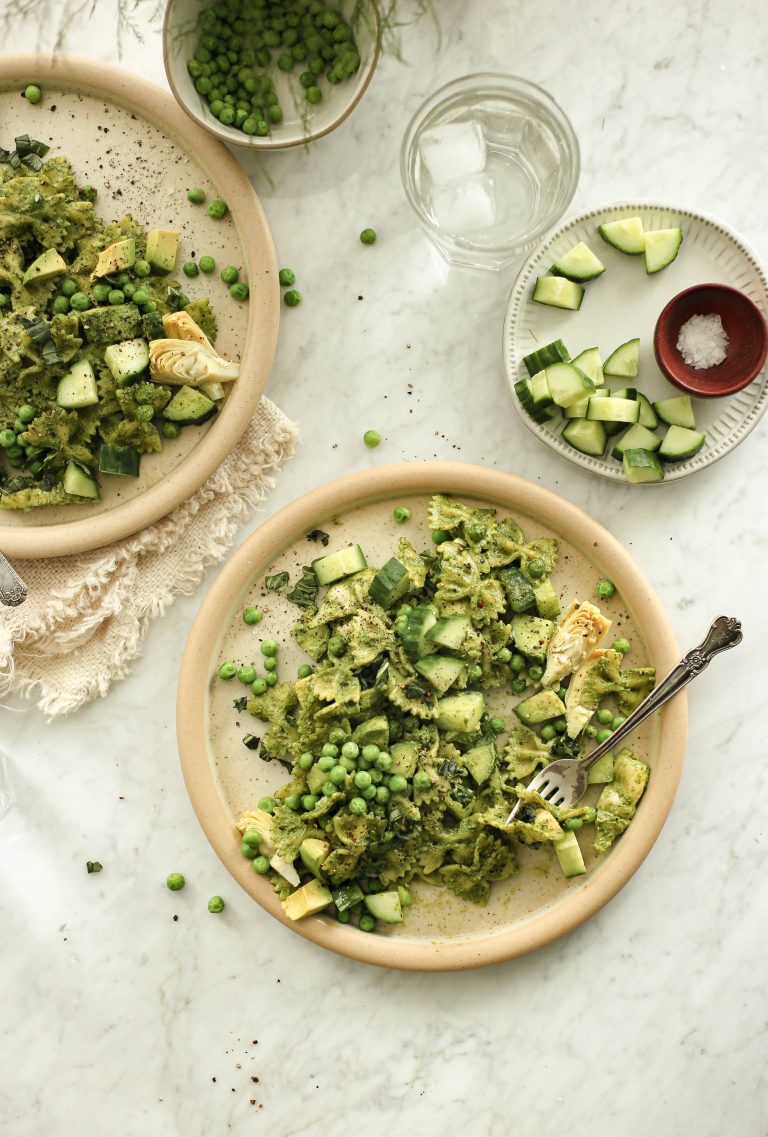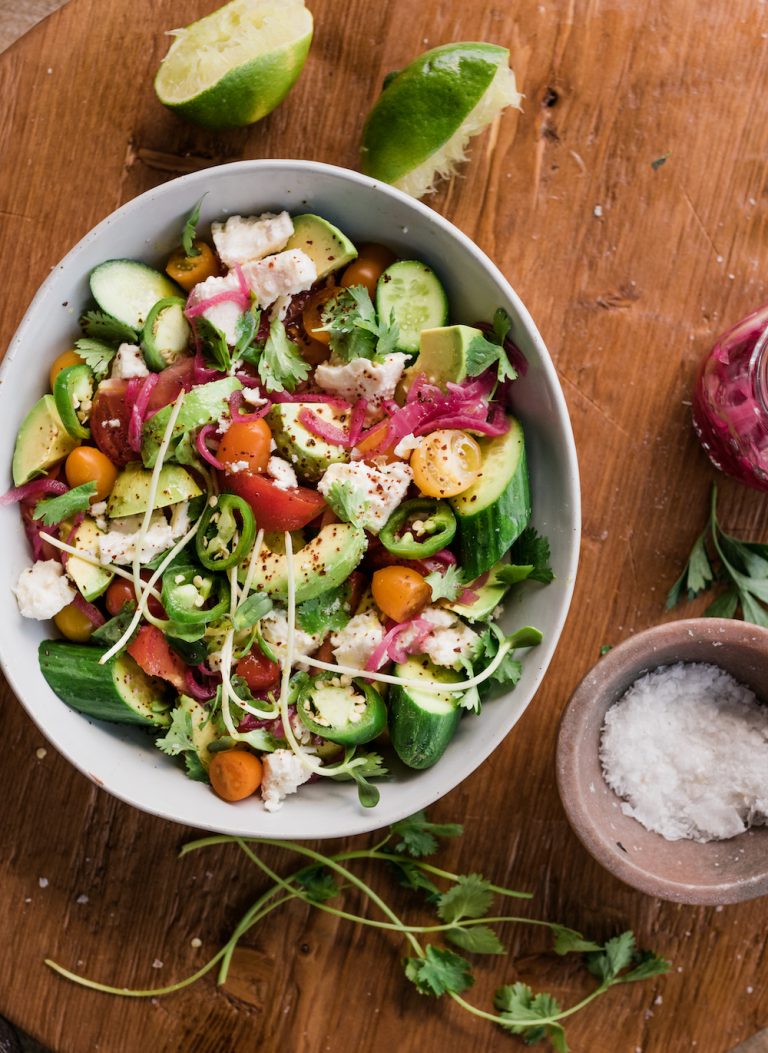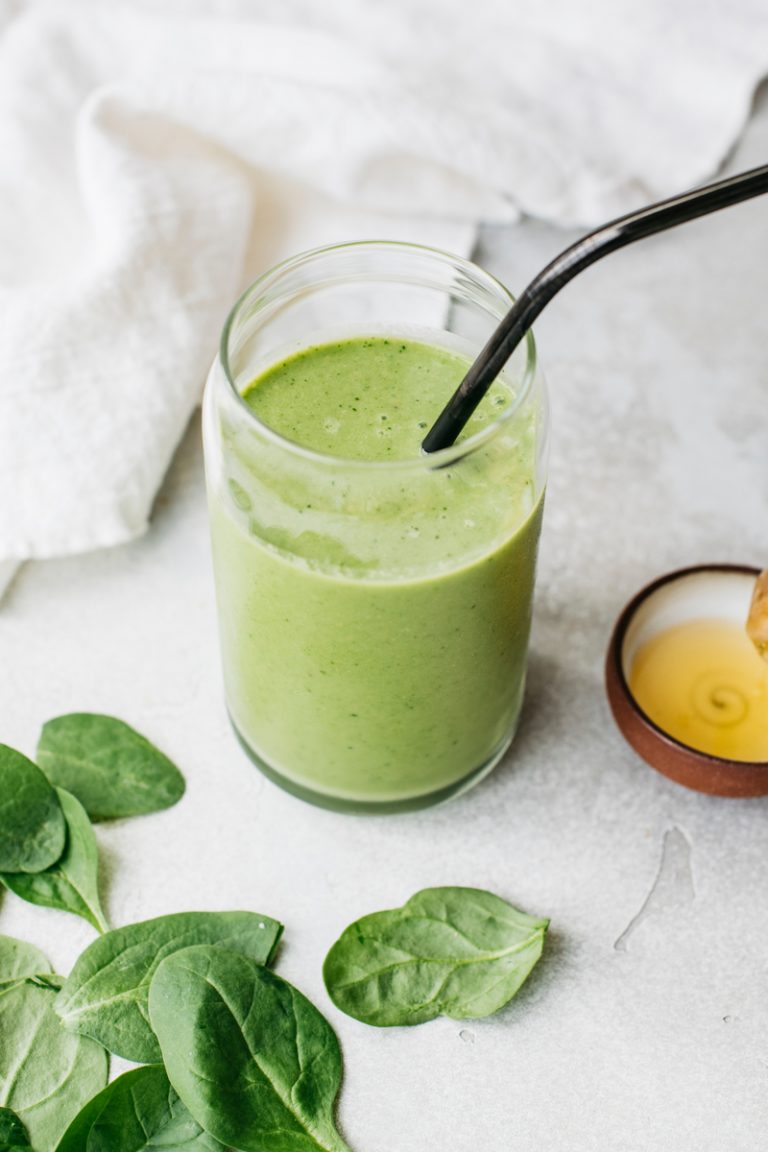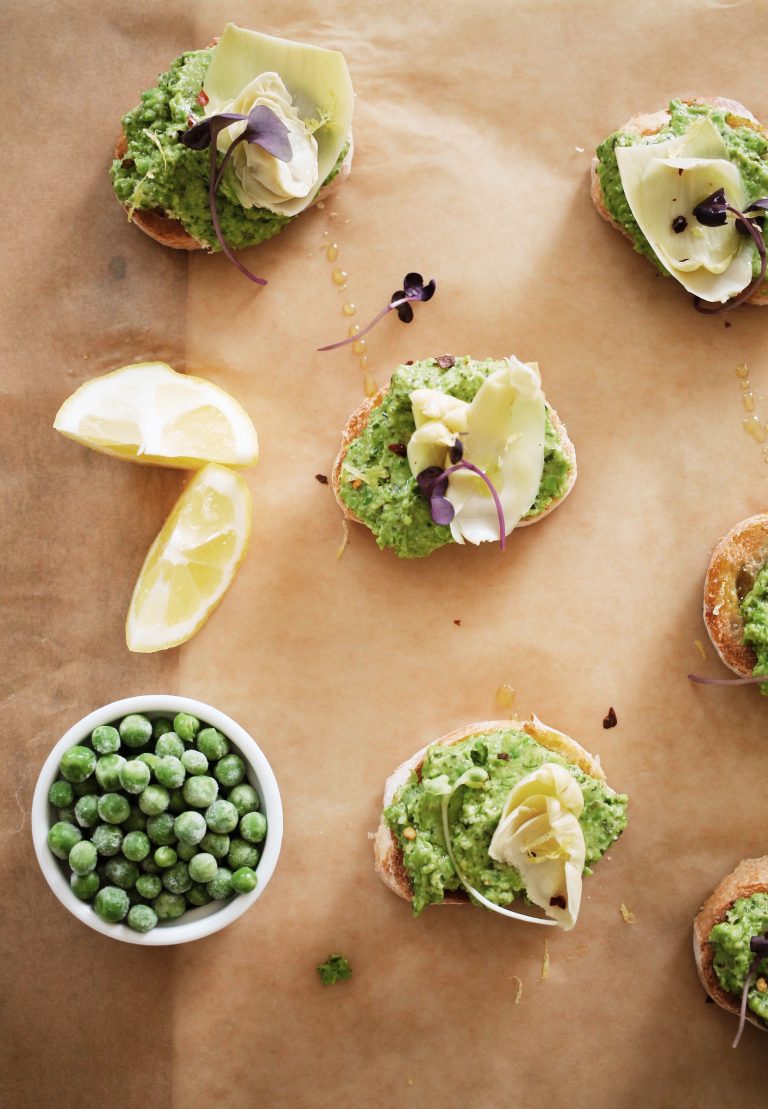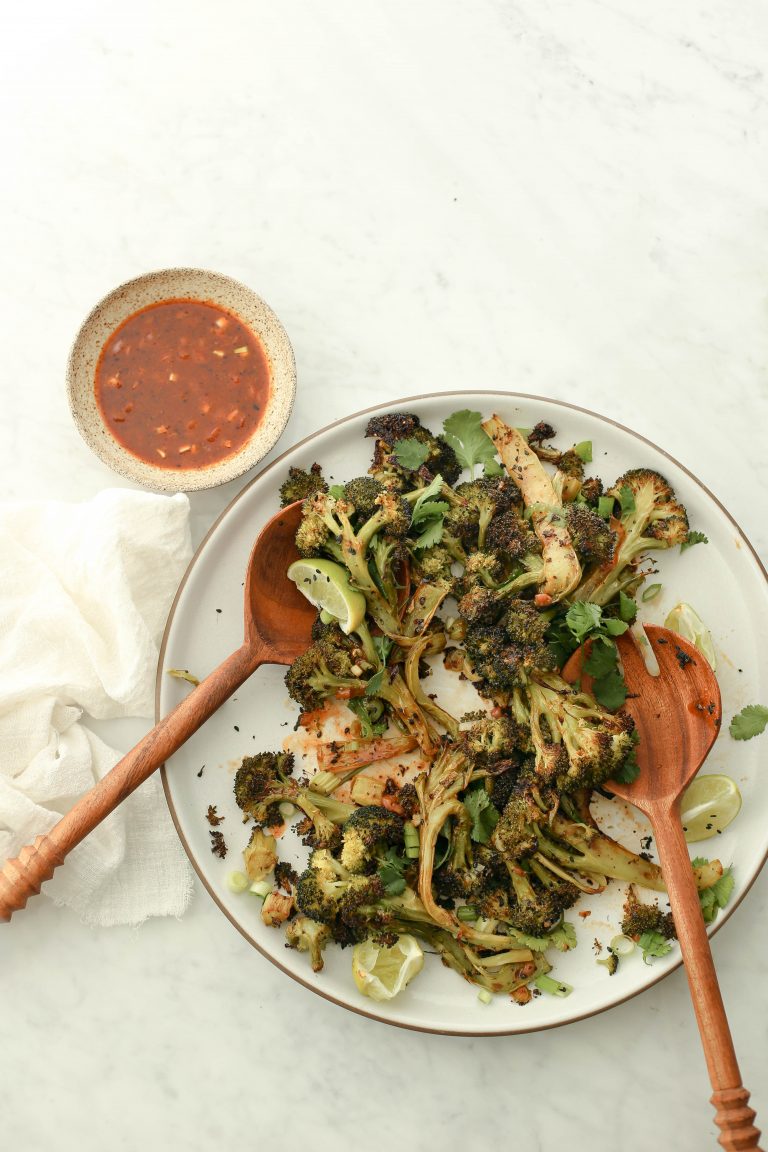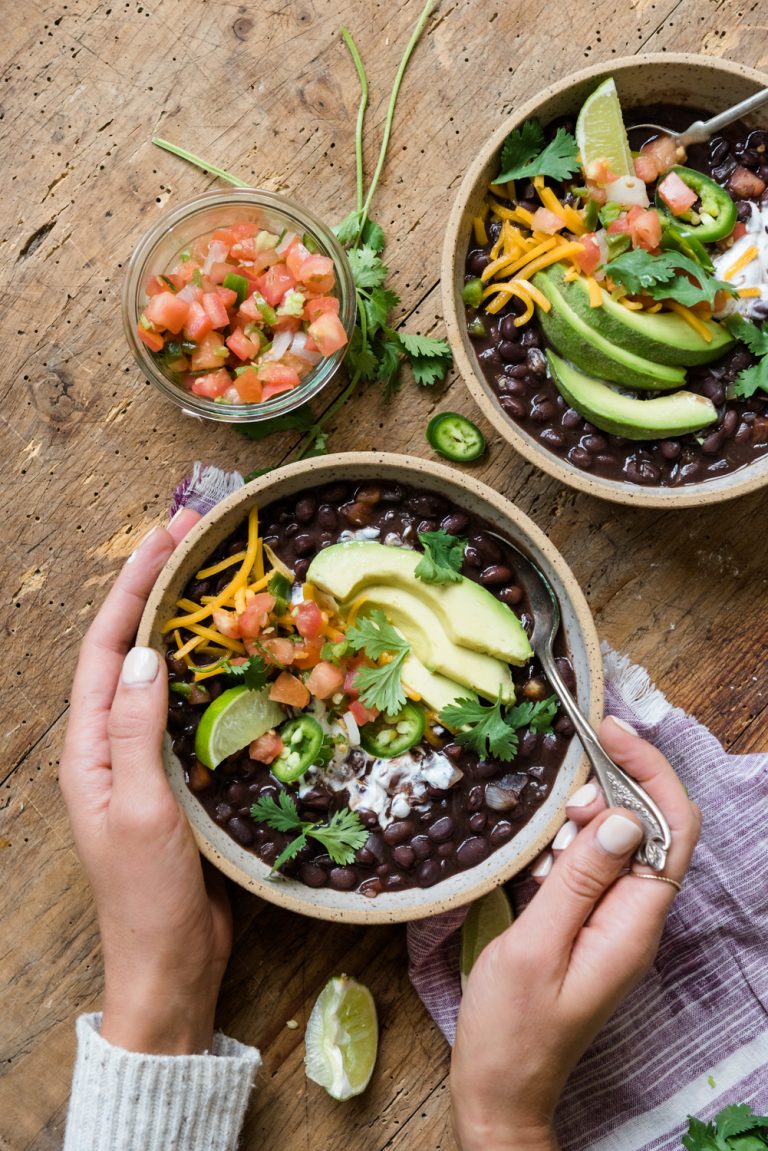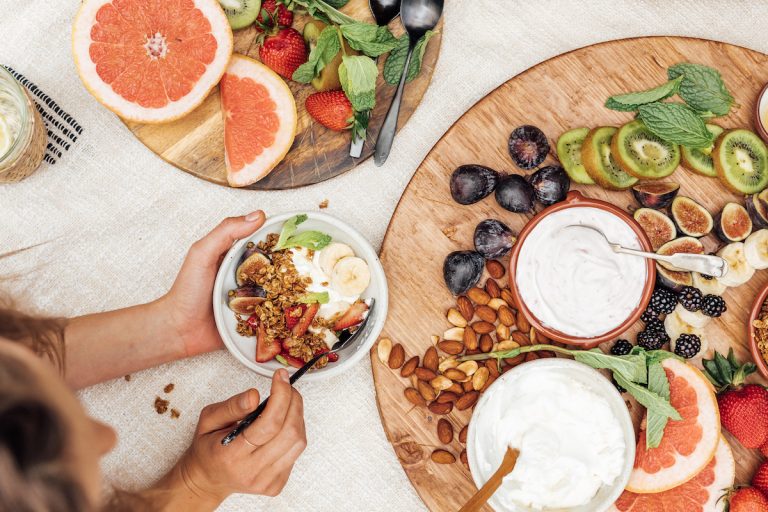
Most of us aren’t strangers to bloating, cramps, and other digestive woes. In part, it’s because we’re missing a key nutrient for proper digestion: fiber. We’re very deficient (and experts aren’t thrilled). But it’s no surprise—the Standard American Diet is practically devoid of fiber. We obsess over carbs and protein, but we neglect fiber’s tiny but mighty impact. And thus, we’re overfed but undernourished. Without further ado, let’s break down the deets on fiber, how to improve your digestion through nutrition, and easy to digest vegetables! It might be time to reach for an extra serving of greens, top your breakfast with berries, or dust off your blender.
Featured image by Michelle Nash.
Closing America’s Fiber Gap
When we talk about the pitfalls of the American diet, we tend to focus on our excessive amounts of processed sugar, table salt, and nutrient-devoid calories. In turn, we neglect to talk about our lack of fiber. There’s a nuance to fiber’s absence, but mostly, it comes down to exposure. We’re encouraged to buy processed foods (for their convenience and taste), and what fast food joints offer doesn’t make it any easier. Said differently: we’re not eating real food.
Because of this, we’ve wedged ourselves into the fiber gap. Centuries ago, it wasn’t this way. The human species has traditionally evolved to eat fiber—a lot of it. In fact, long before we learned to domesticate animals, we subsisted on mainly fiber-heavy fruits, roots, shoots, nuts, and seeds. We ate with the seasons and consumed fiber in abundance. Without a doubt, we ate plenty of easy to digest vegetables.
What is fiber?
Let’s rewind. Fiber is a type of carbohydrate. It includes a broad spectrum of plant-based material (polysaccharides, pectin, guar gum, etc.) that the body can’t digest. Though most carbohydrates are broken down into sugar molecules, fiber is an outlier. Instead, fiber passes through the body, undigested. It comes along for the ride—which is precisely why it’s so important. Fiber helps minimize constipation, regulates hunger cues, keeps blood sugar in check, slows glucose absorption, promotes heart health, and more. The FDA has a helpful, easy-to-digest guide on fiber here.
4 Tips to Slowly Eat More Fiber
To begin, consider the notion of “crowding out”—the more fiber-rich ingredients you add to your plate, the more you’ll naturally crowd out more processed, nutrient-devoid foods. Using the tips below, consider where it makes sense for you to begin adding more fiber into your diet.
Take Advantage of Meal Prep
Begin meal prepping more plant-based foods. You’ll be much more likely to reach for foods with fiber when they’re ready to go (and easy to see). Take a peek at these high-fiber recipes for inspo.
Start Slow
Rather than add high-fiber foods all at once, add 1-2 servings a day to your regular diet. Do this for a week, let your body adjust, then add another serving the following week.
Consider Simple Swaps
For example: your regular bowl of cereal for high-fiber cereal, white pasta for 100% whole wheat pasta, berries instead of a banana, and a high-fiber protein bar instead of your usual grab-and-go snack.
Get Creative
Food is fun! Enjoy an alternative weekend breakfast, like this beautiful (and functional) breakfast board. Eating more fiber doesn’t require pounding wheat bran.
What Foods Have Fiber?
You’ll find fiber in fruits, veggies, nuts, seeds, grains, and legumes. A good rule of thumb: whole foods—rich in color—are often high in fiber. Just another reason to eat the rainbow! Cooked or raw, produce is an incredible source of fiber. However, studies show that for the highest fiber retention, eat your vegetables raw (or as close to raw) as possible. Cooking your veggies, through boiling, roasting, etc., can reduce the fiber by almost half. If you’re new to eating fiber, cook your veggies. By trial and error, you’ll find what works best for your body. Start slow and work your way up.
Below is a short list of fiber-rich foods, complete with their approximate fiber content:
- 1 cup edamame: 18 grams
- 1 cup lentils: 16 grams
- 1 cup black beans: 15 grams
- 1 cup garbanzo beans: 12 grams
- 2 tablespoons chia seeds: 10 grams
- 1 cup raspberries: 8 grams
- 1/2 cup raw pistachios: 7 grams
- 1 persimmon: 6 grams
- 1 cup broccoli: 5 grams
- 1/2 cup avocado: 5 grams
How Vegetables Improve Digestion
So, how do vegetables improve digestion? They’re loaded with fiber, acting as a mop for your intestines and colon. They sweep up toxins and keep things moving through the intestines. In turn, vegetables help prevent constipation. Not to mention, fiber-rich vegetables signal to the body that you’re full and satiated. And don’t skip the skins! The skins of vegetables (potatoes, beans, and legumes) are rich in fiber, so it’s best to consume them whole.
5 Easy to Digest Vegetables
From the aforementioned list, you can glean which foods aid in gut health. These are known to improve digestion. That said, take this list with a grain of salt. We all have different food allergies and intolerances!
Leafy Greens
Leafy greens, such as spinach, collard greens, or kale, are excellent sources of fiber. They’re also rich in nutrients like folate, vitamin C, vitamin K, and vitamin A. Research shows that leafy greens also contain a specific type of sugar that helps fuel the growth of healthy gut bacteria. Plus, greens help your intestines push waste out of the body. Along with salads, add greens to your eggs, smoothies, and pasta.
Artichokes
Did you know that one medium artichoke has nearly seven grams of fiber? Studies show that artichokes can actually help control symptoms of irritable bowel syndrome, and they’ve been shown to protect the liver. Most importantly, artichokes contain prebiotics, which allow your gut’s good bacteria to flourish. They’re incredibly versatile—jarred artichokes (marinated in olive oil) are delicious on a charcuterie board, in a sandwich, on a salad, etc.
Broccoli
Cruciferous vegetables, like cabbage, cauliflower, broccoli, and Brussels sprouts, are gut powerhouses. They’ve been linked to better digestive health and diversity of the microbiome. They’re known for reducing risk of colorectal cancer and lowering inflammation of the colon. Their prebiotic fiber can help lower inflammation, too. If you’re not regularly eating cruciferous vegetables, add them to your diet in small amounts (to start). Consult your physician if you have a thyroid disorder, as large amounts of cruciferous vegetables are often discouraged.
Beans
Legumes—a class of vegetables that includes beans, peas and lentils—are among some of the most versatile and nutritious foods available. And they’re packed with fiber. Specifically, they contain a fiber called oligosaccharides. In essence, beans help shuttle nutrients into your bloodstream and keep toxins out. They’re a wonderful way to kill two birds with one stone: up your fiber intake and increase your plant diversity. Keep canned beans on hand to mix-and-match!
Butternut Squash
Turns out, butternut squash is one of the best foods for improving gut health and digestion. Reason being? It’s loaded with dietary fiber. One cup of cooked butternut squash contains about seven grams of fiber. That said, no matter which type of squash you choose—acorn squash, kabocha squash, summer squash, etc.—you’ll find a decent amount of fiber. These easy to digest vegetables provide both insoluble and soluble fiber. We love squash in salads, as a side dish, or alongside scrambled eggs.
